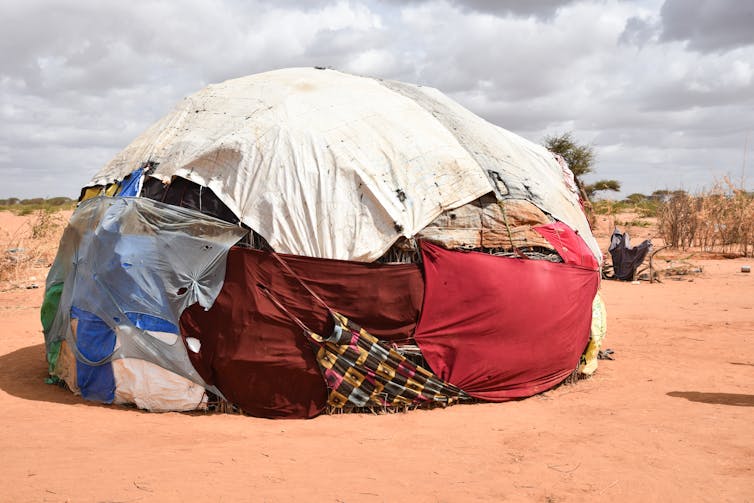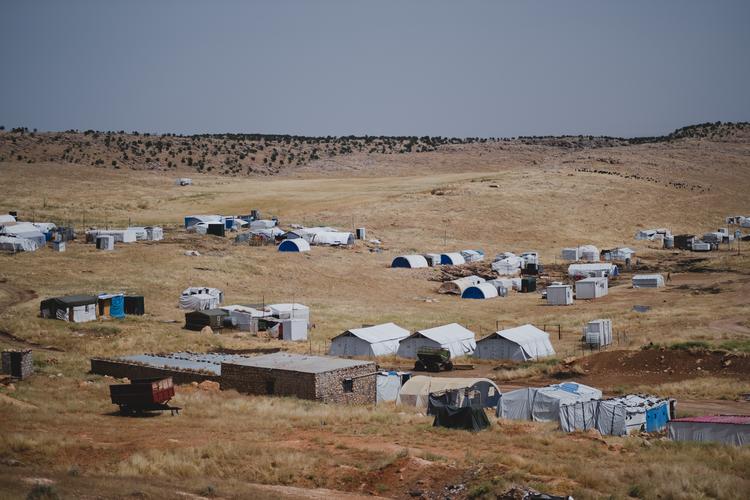By Rita Issa, University of East Anglia | –
It was getting hotter. Frank May got off his mat and padded over to look out the window. Umber stucco walls and tiles, the colour of the local clay… [he] took a deep breath. It reminded him of the air in a sauna. This, the coolest part of the day. In his entire life he had spent less than five minutes in saunas, he didn’t like the sensation …
Here there was no escaping it.
(The Conversation) – The opening chapter of Kim Stanley Robinson’s The Ministry for the Future paints a harrowing scene of a near-future heatwave which triggers millions of excess deaths. The protagonist Frank witnesses the extremes that humans will go to for survival: stealing air conditioning units and wading into the town lake to find any way to cool down.
Frank survives – he is a fit, western aid worker. Others, particularly the young and the old, are not so lucky. The story follows Frank’s guilt at having lived and his subsequent actions, alongside global attempts to manage the fallout of such a disaster. While the novel is dubbed climate-fiction, much of what it describes could well come to pass. In parts of the world, it already has.
The decade spanning 2011 and 2020 was the warmest on record. Current national commitments to cut greenhouse gas emissions put Earth on track for 2.7°C of warming. Scientists believe this would entail 2 billion people living with average annual temperatures above 29°C as soon as the end of this decade – heat that very few communities are accustomed to.
Photo by Levi Meir Clancy on Unsplash
This will have multiple repercussions, not least for human health. High temperatures compromise the body’s ability to regulate its own internal temperature, affecting the heart, lungs, brain and kidneys, as well as the mind and the hormonal system, all of which can contribute to premature death and disability. Temperature extremes (both hot and cold) already result in 5 million excess deaths a year.
There are many ways in which humans adapt to temperature extremes and other climate-related risks – and one valid response is migration. This includes temporarily migrating in the hottest months, longer-term seasonal migration often for employment reasons, and permanent migration. No study has systematically mapped the connections between heat and migration, so my research team and I sought to do just that.
Our findings suggest that heat, in at least some contexts, is and will continue to play a part in peoples’ intention to move, while also threatening their health when on the move and settling.

Médecins Sans Frontières, Author provided
The heat factor in migration
We read scientific studies, non-governmental organisation reports, government policy documents and other sources about heat and migration. We noticed they fit into two categories. The first looked at how heat drives migration. The second studied the impact of heat on migrants while travelling and when living in a new place.
Of the 32 studies that considered how heat affects migration, half showed that consistently rising temperatures would increase the likelihood that a person will migrate, though this wasn’t the case across the board. People seem to be less likely to migrate because of rising temperatures in low-income countries compared with high or middle-income countries.
Heat pushes people to migrate through a variety of intersecting factors: physiological discomfort, extreme events such as wildfires, poverty and restricted access to water and food, among others. There are also other more subtle factors which influence the likelihood of people choosing, or being able to choose, to migrate. This includes whether they live in the countryside or a city, their gender, how old they are and whether they have access to suitable healthcare and a source of income where they reside.
Heat risks health
Meanwhile, for people on the move, heat and heat stress pose risks at all stages of the journey, as described in papers mostly from the US and Mexico. Many studies concerned people migrating to find work, particularly in agriculture and industry, where the risk of heat appears to be less important than the need for economic survival.
Once in a new destination, the impacts of heat seem to be worse for migrants than non-migrants. This can be because of the type of housing and work migrants are more likely to find themselves in. No studies reported a positive impact of heat on health.
This review paper – as with any academic exercise but particularly when dealing with complex systems – has several limitations, including differences in how heat is measured and how migration is defined. And our findings are somewhat complex, mirroring the complexity of migration and the climate system.
While there is a trend towards people migrating as a result of increasing temperatures, no absolute threshold is defined above which people will definitely migrate, and migration also does not seem to be a guaranteed outcome of heat. The decision and ability to migrate is never straightforward, and is often a last resort when other measures for adapting to the heat have been exhausted.
The world’s average temperature may reach 1.5°C above the pre-industrial norm for the first time later this decade. Opportunities to slow the rate at which Earth is heating must be enacted in a timely manner.
Regardless, the regions experiencing temperature extremes are growing, with consequences for human health and the systems that underpin food, employment, political stability and liveability. Now that we know about these risks, climate-related preparations, planning and intervention must focus on vulnerable populations to lessen the impacts of heat on these people.

Don’t have time to read about climate change as much as you’d like?
Get a weekly roundup in your inbox instead. Every Wednesday, The Conversation’s environment editor writes Imagine, a short email that goes a little deeper into just one climate issue. Join the 10,000+ readers who’ve subscribed so far.
Rita Issa, PhD Fellow, Tyndall Centre for Climate Research, University of East Anglia
This article is republished from The Conversation under a Creative Commons license. Read the original article.




 © 2025 All Rights Reserved
© 2025 All Rights Reserved